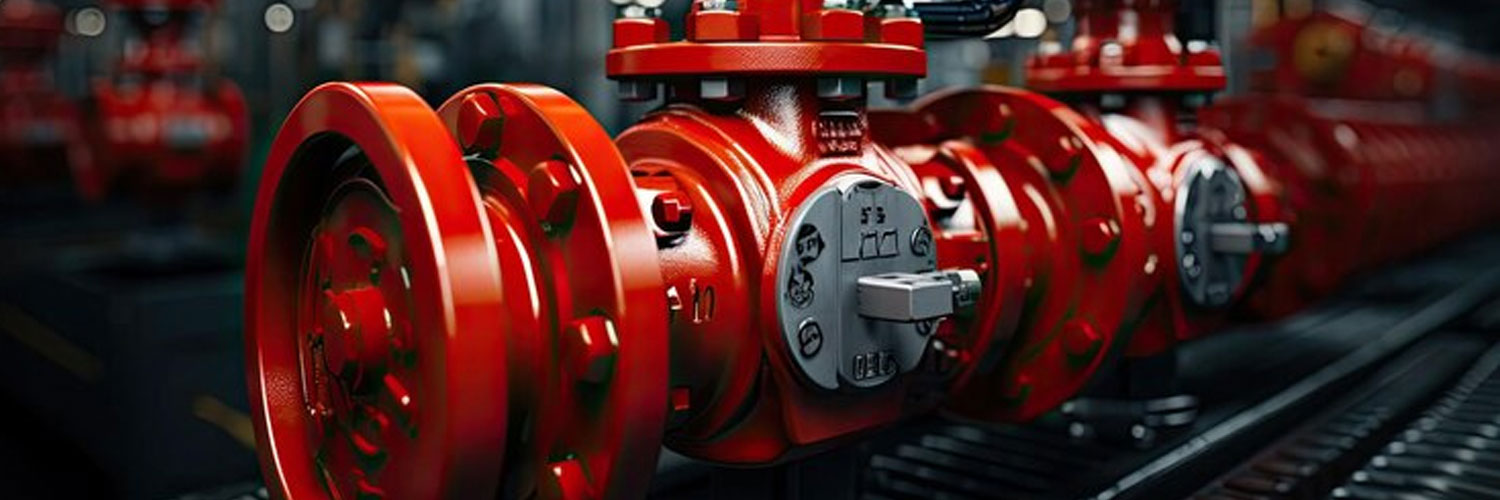Introduction
Imagine the complex network of pipelines that deliver natural gas to our homes and industries. The silent heroes behind this intricate system are natural gas compressor stations, tasked with maintaining the pressure needed for efficient transportation across vast distances. However, pressure drops and unwanted flow reversals can disrupt this delicate balance. Enter swing check valves, playing a vital role in ensuring both flow regulation and system safety. In this blog, we’ll delve into the significance of swing check valves in natural gas compressor stations, their functioning, and why they are vital for the integrity of the entire system.
Understanding Swing Check Valves
At the heart of a natural gas compressor station’s intricate dance of pressure and flow lies a simple yet crucial device: the swing check valve. These valves act as vigilant gatekeepers, ensuring gas flows in the intended direction and preventing potentially hazardous backflow. Imagine a swinging disc within the valve. As the gas surges forward, this disc obligingly pivots open, allowing a smooth flow. But when the flow ceases or attempts to reverse, the disc swings shut, creating an impenetrable seal. In essence, swing check valves are the silent guardians within the pipelines, maintaining order and safety in the world of natural gas transportation.
Importance in Natural Gas Compressor Stations
1. Flow Regulation: Maintaining a smooth flow of natural gas through the station’s veins is where swing check valves come into play. These valves act as one-way streets for gas, ensuring it travels in the intended direction and preventing disruptive backflow. This unidirectional flow is vital for the station’s heartbeat – optimal pressure levels. Without it, surges and fluctuations can wreak havoc on efficiency, making swing check valves silent guardians of smooth compressor operation.
2. System Safety: Swing check valves are not just masters of traffic flow; they’re champions of safety within the compressor station. These valves act as a robust defense against backflow, a sneaky culprit that can arise from unexpected pressure shifts, equipment malfunctions, or operational hiccups. The backflow of natural gas can trigger a domino effect of dangers – damaged equipment, contaminated lines, and even explosions. Swing check valves guard against these threats, offering a reliable shield against reverse flow and safeguarding the entire system’s integrity.
Functioning of Swing Check Valves
The brilliance of swing check valves lies in their elegant simplicity. As natural gas surges through the pipeline, its pressure acts as a key, nudging the swinging disc open to allow smooth passage. But when the flow sputters to a halt or gets reversed, gravity and the opposing fluid pressure take over. The disc swings back with authority, sealing the valve like a vigilant guardian and preventing unwelcome backflow.
FAQs
Q1. Why are swing check valves preferred over others in natural gas compressor stations?
Swing check valves offer low-pressure drop, reliable sealing, and minimal maintenance requirements, making them well-suited for high-pressure gas applications commonly found in compressor stations.
Q2. How often should swing check valves be inspected and maintained?
Regular inspection and maintenance of swing check valves are essential to ensure proper functioning and prevent potential issues. The frequency of maintenance activities may vary depending on factors such as operating conditions, environmental factors, and manufacturer recommendations.
Q3. What are some common challenges associated with swing check valves in natural gas compressor stations?
Challenges such as corrosion, erosion, fouling, and mechanical wear can affect the performance and lifespan of swing check valves. Proper material selection, installation, and maintenance practices are necessary to mitigate these challenges and ensure the long-term reliability of the valves.
Conclusion
Swing check valves are the unsung heroes of natural gas compressor stations. These seemingly simple devices ensure that the station operates smoothly and safely. By meticulously regulating gas flow in just one direction, they prevent potentially disastrous backflow scenarios. Backflow can occur due to unexpected pressure fluctuations, equipment malfunctions, or human error. If unchecked, it could lead to a cascade of problems – damaged equipment, contaminated pipelines, and even explosions. Swing check valves are a reliable shield against these threats, safeguarding the entire system’s integrity and preventing costly downtime.

